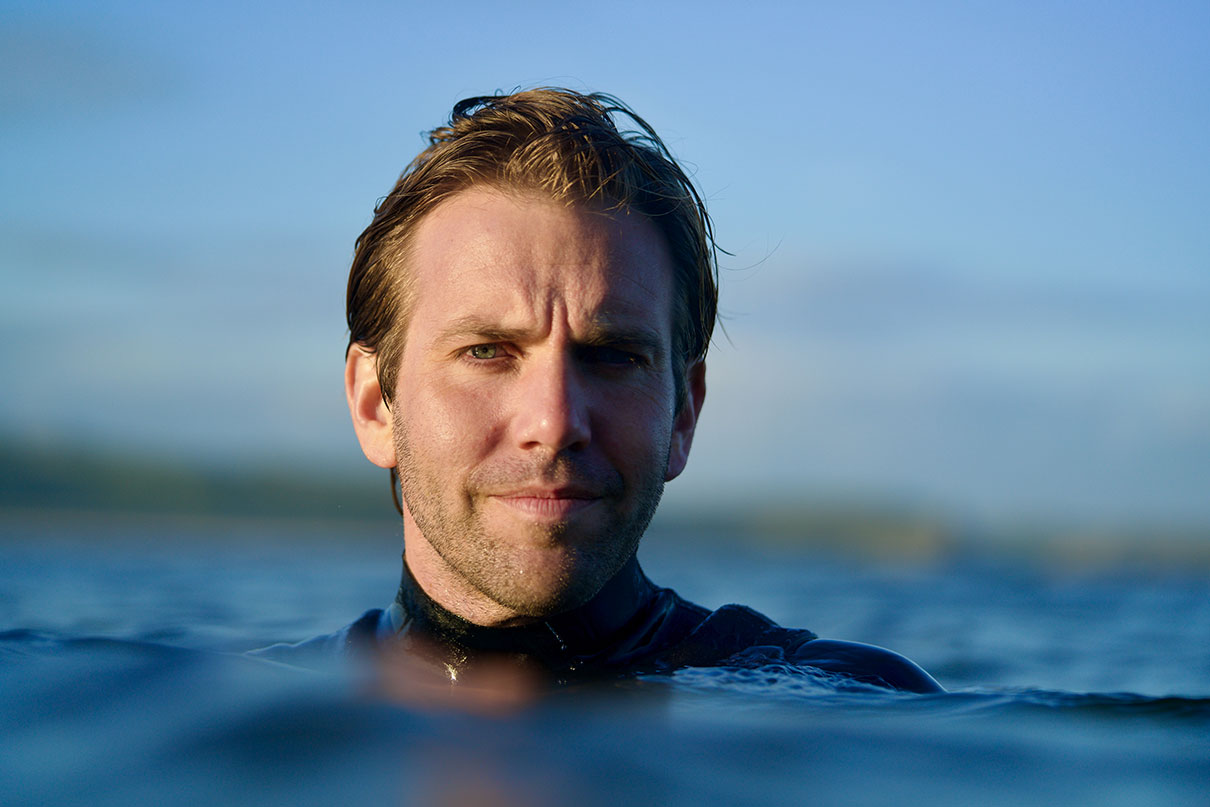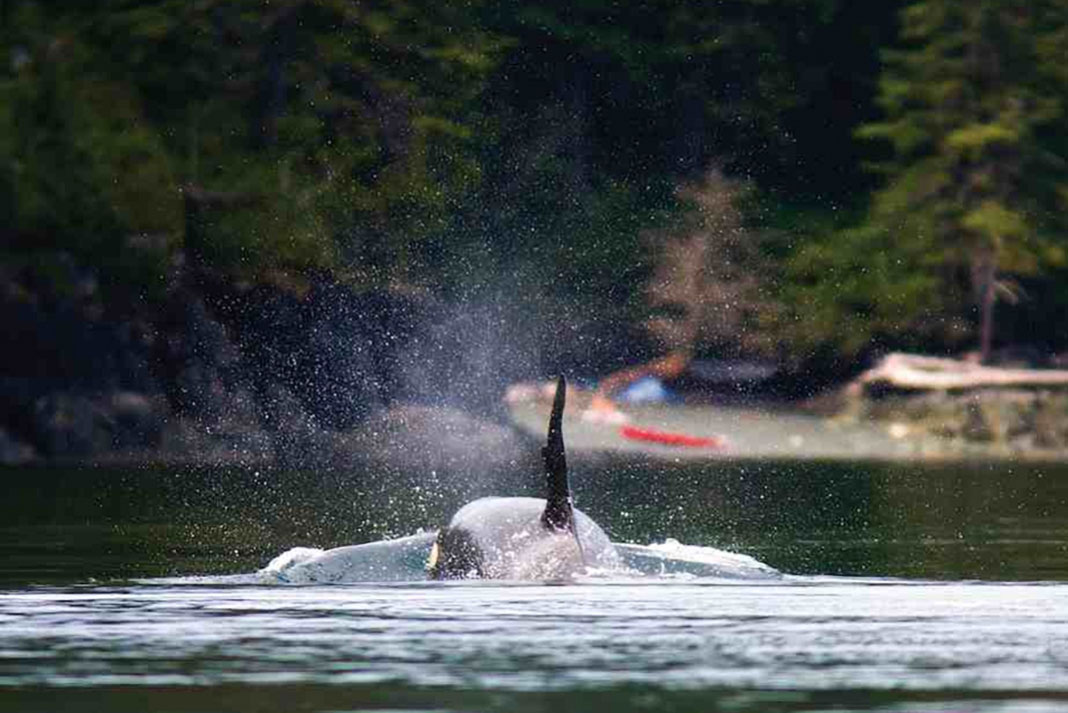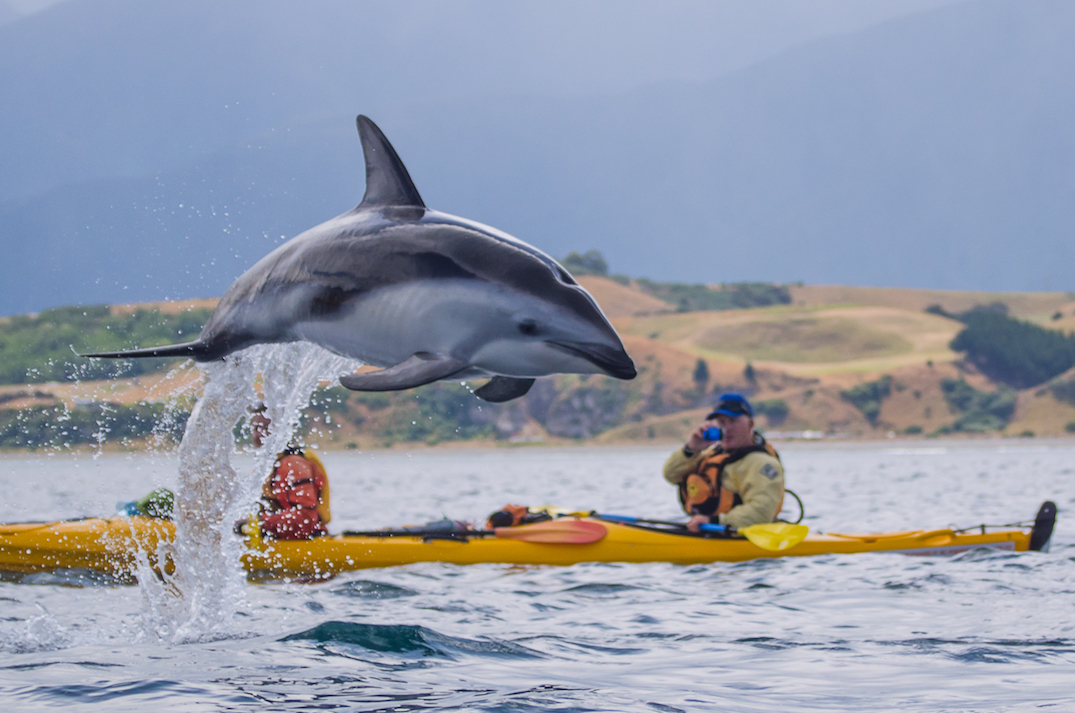“For Dad, wish you could have seen it—and humpback whale CRC12564, for setting me on this journey.”
These are the opening words of British naturalist Tom Mustill’s 2022 book, How to Speak Whale: A Voyage into the Future of Animal Communication. The book is an exploration of how human-animal connections are evolving, particularly with the rise of artificial intelligence. But the inspiration for Mustill’s work stems from a harrowing viral encounter that nearly cost him his life and altered the course of his career.
Meet the kayaker almost crushed by a whale in this viral video
In September 2015, Mustill, an accomplished biologist and documentary filmmaker, was kayaking off the coast of Monterey, California, when a 30-ton humpback whale the size of a school bus breached and collided with his kayak, sending him and his paddling partner tumbling into the ocean. The dramatic moment, captured on video by a nearby whale-watching boat, has been viewed more than 6.6 million times.
“That was my main feeling—just feeling enormously lucky for having experienced something that full on and feeling that much energy,” said Mustill. “I wasn’t emotional [at the time]. I just thought, I am going to die.”

Working to bridge the gap
While the viral video made him synonymous with human-whale interactions for a time, it also sparked a shift in Mustill’s life. Trying to understand the close encounter with humpback whale CRC12564 left him wondering what the whale had been thinking. That question started a journey that culminated in the writing of How to Speak Whale, in which Mustill seeks to make sense of his experience and explore the broader implications of animal communication in an era increasingly dominated by technology. The book delves into the emerging science of animal communication, exploring how artificial intelligence and machine learning are being used to decode the languages of non-human species.
Mustill’s connection with whales dates back much further than his encounter in California. As a young paleontology student conducting research in the sub-Arctic, he experienced a life-changing moment when a pod of whales surrounded his small inflatable boat.
“It was in the middle of the summer, and the sun never set. We were lying in our tents, and we heard these whales. They were just 20 yards away, and there were hundreds of them. We pushed this little inflatable dinghy off the shore, and there was a pod all around us,” says Mustill. “I was going to be a paleontologist… but it was like the whales had literally come along and jerked me out of this. I became so fascinated with the challenges of things that were currently alive.”
Mustill’s passion for understanding the natural world is evident when he speaks. His stories about human-animal encounters are told with a smile, reflecting a deep appreciation for the unpredictable beauty of nature. Canoeist and author Sigurd Olson was one of Mustill’s most formative writing inspirations. In his book Recollections from the North Country, Olson laments society’s detachment from the natural rhythms of the world. Mustill’s work, much like Olson’s, seeks to rekindle the connection.

“When you go out into nature, you’re not thinking: I really hope I see this. I’m thinking, I wonder what I’m going to see,” says Mustill. “It’s really different from a kind of bucket list approach to life… when other lives kind of just come across you and depart again unexpectedly, particularly when you’re under your own steam. If you’re sat in a kayak or a canoe or on a board or swimming or walking, it’s so intimate… you both have a feeling that you’re not forcing something, that there is a kind of meeting going on.”
Calls in another tongue
For many paddlers, unexpected animal encounters—like spotting a moose in a marsh or a bear on a distant beach—are what draw them back to the water time and time again. You can review the best practices for wildlife encounters, including whales, here. Mustill believes such moments of connection can help bridge the divide between humans and other animals. On his website, he has compiled a collection of whale calls designed to evoke the same sense of connection and intimacy that paddlers experience on the water. Mustill hopes that by listening to these calls, people will feel a deeper connection to the natural world.
Ian Patton is a journalist and outdoor educator who has spent the past decade on the water paddling open canoes across the United States and Canada. Originally from Duluth, Minnesota, Ian grew up paddling in the Boundary Waters and has taken his love of rapids to the southeastern United States where he now lives.
Tom Mustill shares how nearly being crushed by a whale changed his life. | Feature photo: Youtube.com







I too had a close encounter with a humpback I’ll never forget. Spotting the whale from my apartment on Easter Monday 2016, I raced to my club and jumped in a kayak to paddle into Vancouver’s English Bay. After an hour trying to locate it, I turned around to go back when a police boat came racing up from behind me. When it drew alongside me, the leviathan rose in front of it. I guess it had been resting there just below the surface and awoke at the sound of the police motor boat about to run it over. The whale swam directly towards me and dove under my 14 kayak to emerge on the other side with its big back and flukes propelling it. I feel it was using me as a guard between the motor boat and it. Later, when the police took off, the immense creature exploded up from the water, breaching into the air and flipped over. The wake jostled my kayak, as my heart pounded. Luckily, I was able to snap a photo over my shoulder of his initial stage of breaching. I figured he it was sending a warning to other boaters out there that he was in the vicinity. In later days, I noticed they’d figured out the motor boat tire and stayed over towards the Kitsilano bay area where the kayaker and paddle boarders were, a safer place for a whale to be.